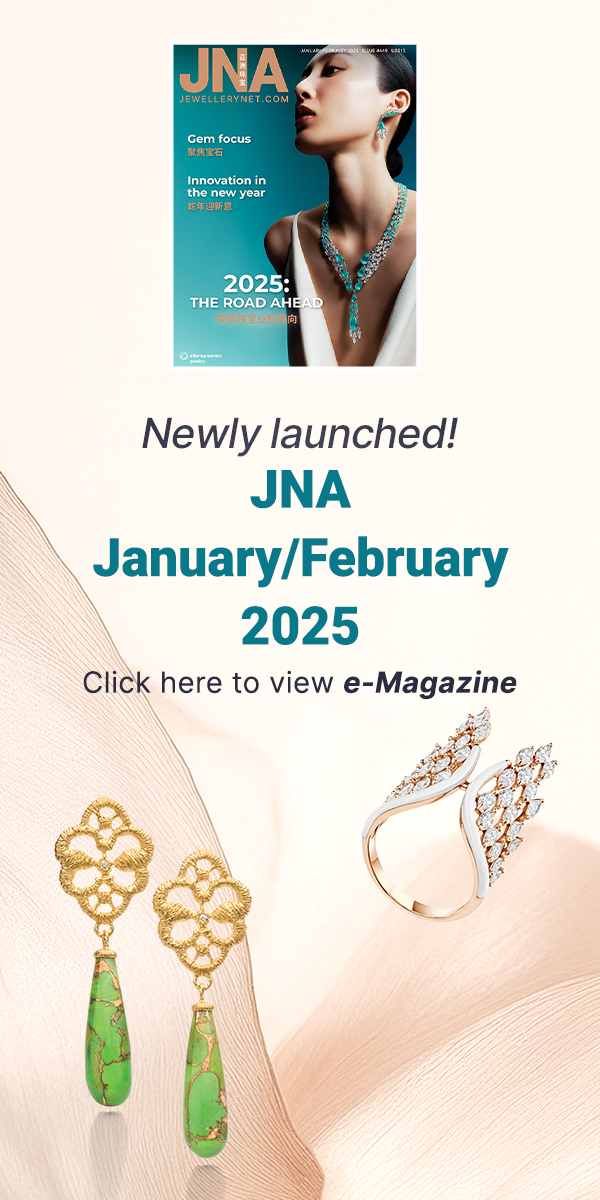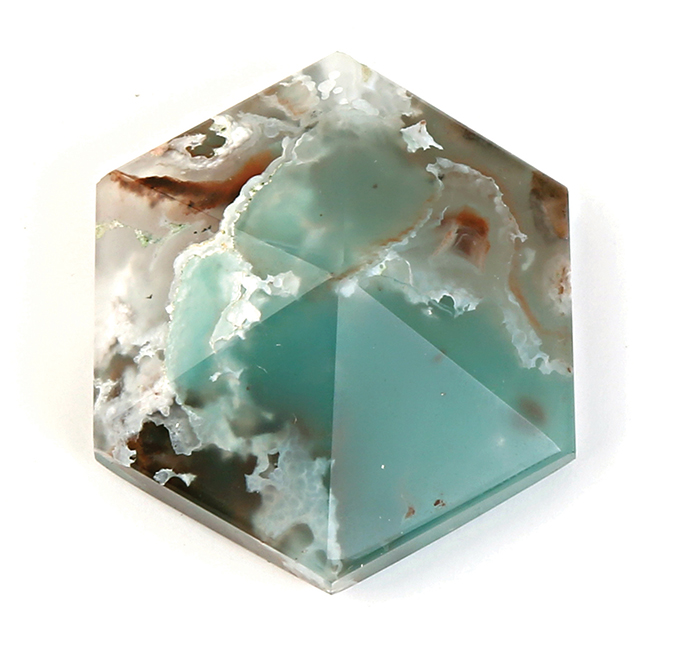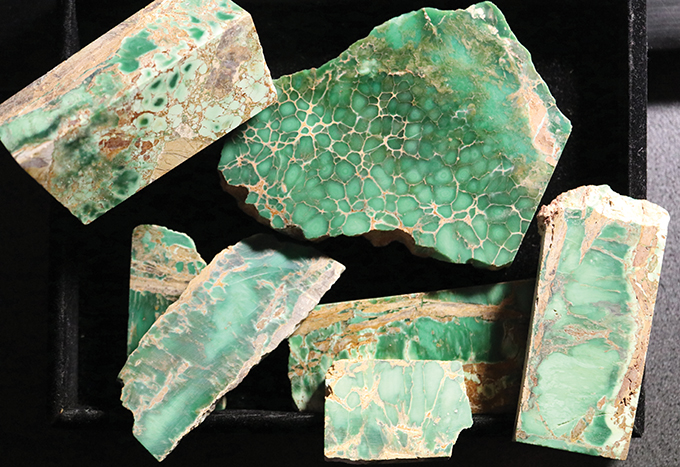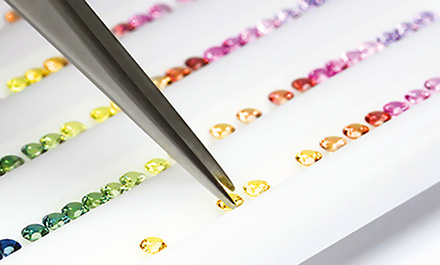Two relatively new gemstones have been making the rounds in the global gem and jewellery community, offering buyers variety and an opportunity to market unique, gem-centric jewellery pieces.
The rise of two rather new coloured gemstones – AquapraseTM and variscite – are a welcome development as the market increasingly leans toward bespoke, character-driven jewellery pieces.
AquapraseTM, described by the Gemological Institute of America as a bluish-green chalcedony, was discovered about six years ago in Africa by gemstone specialist and explorer Yianni Melas of Greece. It has since made waves in the US, the Middle East and Asia.
Melas said, “The stone’s discovery came at a time when consumers want to stand out with a jewellery piece that has character and individuality; they’re not just looking for investment gems.”
One of its defining characteristic is its blue-green colour, reminiscent of calm ocean waters. US buyers, for instance, gravitate towards turquoise-related colours and AquapraseTM being translucent, makes it all the more interesting. A natural stone with exceptional, individual patterns, its also has a solid following in the Middle East and Asia.
AquapraseTM is also extremely durable and won’t crack or fade, according to Melas.
The stone currently sells for US$1 to US$100 a carat, depending on the quality and the pattern of the gem. Demand is expected to pick up as competition drives prices up, particularly for rare gem-quality stones.
Miners are also bent on ensuring steady supply of the stone so it can be sold consistently. “The feedback from stores is that AquapraseTM has the highest ‘repeatability sales’ by the same customer,” noted Melas.
AquapraseTM traders however face the challenge of cutting the stone in a way where the special patterns are obtained without any treatments. Polishing it to a mirror finish is another issue since the stone is hard (7 to 7.5 on the Mohs scale). With the help of technology however, a proprietary technique is used to give the gem the best polish, noted Melas.
“The more polished it is, the more three-dimensional the patterns become, lending more depth to the stone. The gem truly reminds you of the Aegean Sea; you just want to dive into it,” he added.
Rarity and natural patterns also make variscite a gem to behold, according to Perth-based gemstone trader Garry Hall. Variscite is an uncommon, bluish-green mineral that has been used as an ornamental gem since the Neolithic Age. It was initially mined in the US but this material exhibits a paler green colour. The more vivid-green variant is mined in Western Australia.
“This new source from Australia stands out because of the dark green colour of the stone. Using visible reflectance spectroscopy, trivalent chromium was verified as the main chromophore responsible for the colour,” noted Hall.
The stone has been displayed and sold at various trade shows in Hong Kong, the US, Germany and Australia to jewellery manufactures, craft jewellers, carvers and gemmologists. A rough variscite slab sells for US$6 per gram at wholesale while cut or polished stones cost US$7 a carat.
Supply remains stable but since it’s a relatively new stone, most people are still unaware of it so demand varies. Those who see it during trade shows meanwhile are attracted by its colour and unique matrix.
“Each cut stone is different from the next. The pattern can change depending on which way the stone is cut,” remarked Hall. “Growth prospects are hard to forecast but we will keep presenting variscite at selected trade shows in the US, Hong Kong, Germany and Australia in 2019.”




















